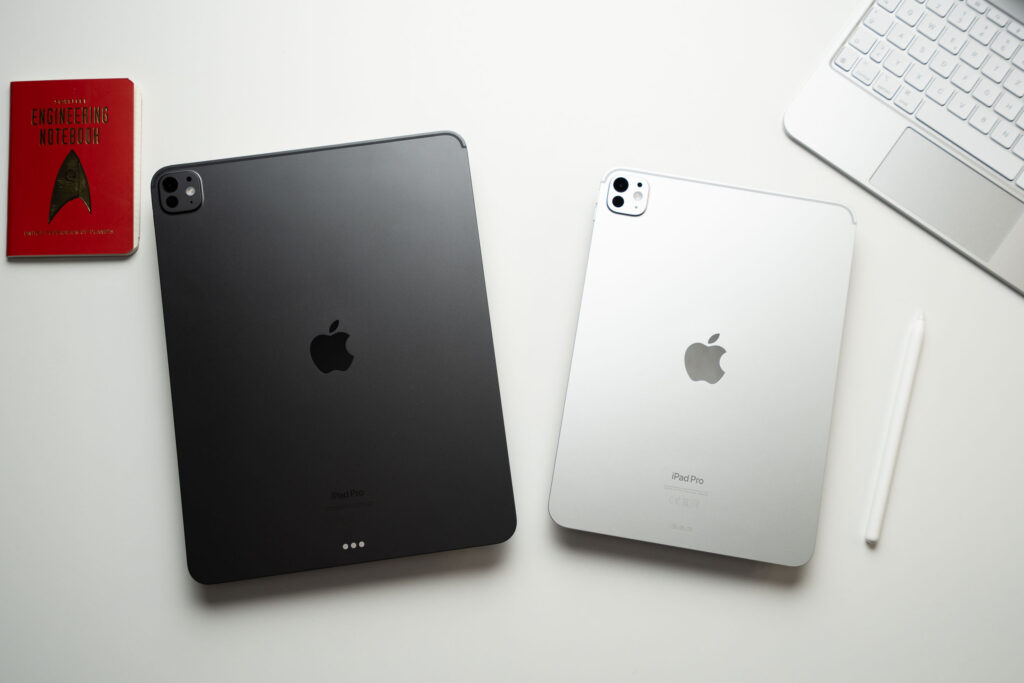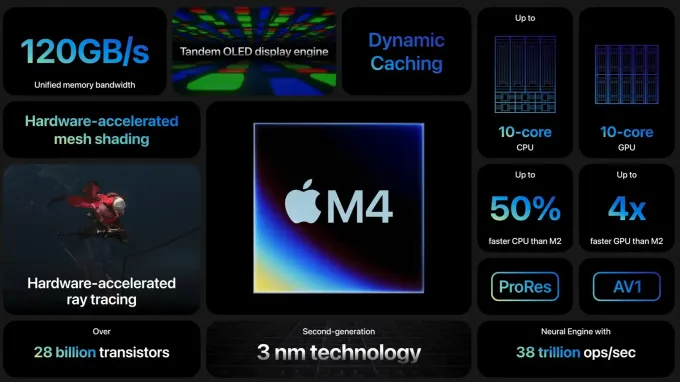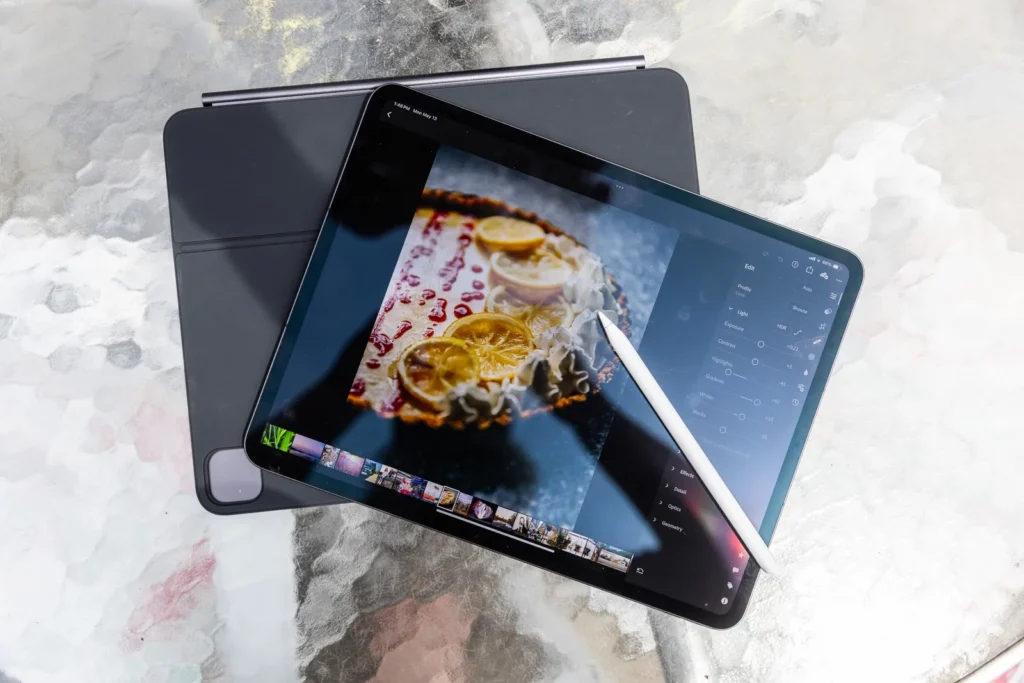Apple’s iPad Pro M4: A Stunning Device with Some Questionable Moves
December 9, 2024 | by ranazsohail@gmail.com

I’ve been using the new M4 iPad Pro for about two weeks now, and honestly, it’s been pretty much the same experience as my old M1 iPad Pro from three years ago. I’ve been doing the usual stuff—watching YouTube, browsing the internet, responding to emails, listening to music—and spoiler alert, it’s almost exactly the same. The M1 iPad Pro was already super powerful, smooth, and responsive, with great battery life. And this new one? It’s even more impressive, handling everything just as effortlessly. I know that doesn’t make for the most exciting review, but I’ve been thinking about some of the more interesting choices Apple made with this new iPad—decisions that didn’t really show up in the rumors or keynote but are still worth noting. So here are five of the most surprising things Apple did with the iPad Pro.

First up, the new iPad Pro is thinner. We all expected that, but it’s still worth mentioning. It’s interesting, though, because I honestly thought we were past the whole “thinner is better” thing. I mean, nobody was really asking for thinner iPads, right? But maybe Apple saw all the hype over Samsung’s ridiculously thin Galaxy Tab Ultra (guilty, it is impressively slim), and decided to go even thinner. The new iPad Pro drops from 6.4 mm (a little thicker than Samsung’s flagship) to 5.1 mm, just edging out Samsung’s thickness. Now, I’m not trying to start a rivalry here, but if you ask Apple, they’ll proudly say, “This is the thinnest Apple product ever!” And they’re not wrong—it’s incredibly thin. But it feels like Apple is just trying to make this model stand out from the past few generations of iPads. There’s even talk they might do the same with next year’s iPhone—just focus on making it thinner and thinner. Personally, I do notice the difference. After using the previous model, this one feels noticeably lighter and thinner. Of course, if you throw it in a case, that difference is less noticeable, but when it’s in your hands, you can tell. The downside of making it thinner, though, is that there’s less room inside the iPad.
Here’s an interesting tidbit: the 11″ M4 iPad Pro actually has a slightly bigger battery than the previous 11″ model, while the new 13″ iPad Pro has a slightly smaller battery—almost the same size as last year’s. Despite that, the battery life is still impressive: it lasts just as long as you’d expect, with great standby time and solid usage. But I can’t help but think: if Apple hadn’t gone so thin with the design, they could have fit a massive battery in there. With the M4 chip’s efficiency, it could’ve had incredible battery life. Instead, we get this super-thin iPad with the same great battery life we’ve always had. Still, part of me wishes they had gone a different route.
There are a few other changes with this iPad, too. They didn’t mention it at the keynote, but they’ve removed the ultra-wide camera. It’s not a huge deal, of course. The camera module still has a big cutout for the LiDAR sensor, so it looks like there could be a dual or triple camera setup, but it’s just a single camera, LiDAR, and a flash. I was also curious if using magnet paper would reveal anything new inside the iPad—this was before JerryRigEverything tore it apart. I had a feeling that making the device thinner would mean smaller speakers. Sure enough, magnet paper (which shows the magnets inside the device) revealed that the new iPad has rounder quad speaker drivers compared to the rectangular ones on the previous model. I compared them side by side, and while the new speakers are still loud and among the best on any tablet, they’re a bit less bass-heavy. With less internal space, the sound isn’t as deep as before, but it’s still very usable.
The packaging hasn’t really changed much. The iPad box is still pretty much the same, but there are a couple of key differences. First, Apple’s ditched the stickers, so if you were one of those people collecting them, sorry. This move is part of their push toward more environmentally friendly packaging, which means no more plastic. They’re also trying to cut down on what they ship. That said, they’re still including two things in every iPad box: a black USB-C cable (for Space Grey models) and a 20-watt charging brick. Even though they stopped including charging bricks with iPhones, they’re still sending one with the iPad. It’s a white 20-watt brick, though, which feels a bit underwhelming, especially for an iPad that could cost you anywhere from $1,500 to $2,500. It would’ve been nice to get a faster charger that matches the cable’s color, but I guess that’s a minor gripe.
Now, onto the iPad Pro itself. The main complaint about the iPad Pro for years has been that it’s an insanely powerful device, but it’s still just an iPad. It does pretty much the same things as an iPad Air, with a few extra features like Pencil hover. Apple hasn’t let it evolve into a full-on computer because they want to protect their Mac lineup. So, it’s basically just a really overpowered iPad. The latest update still fits that mold. The new M4 chip is ridiculously powerful—benchmarking really well—and it’s based on a second-generation 3-nanometer process, with a larger and more powerful neural engine. The problem is, there aren’t many apps or features that fully take advantage of this power just yet. Some are coming soon, like a new Final Cut app, but for now, if you’re using it for typical iPad things like watching Netflix or web browsing, it’ll feel almost exactly the same as the last M1 iPad Pro, or even the M1 iPad Air. The M4 chip does allow for a few new things, like hardware-accelerated ray tracing in some games, and it’s great for the new Stem Splitter feature in Logic Pro 2, which is fantastic if you use Logic on the iPad.

The most interesting thing about the M4, for me, is something they barely mentioned in the keynote and didn’t really highlight on their website. In the past, when you bought an iPad, the main thing you were paying for was storage. You’d start with 128GB (which felt a little small), and as you upgraded the storage, the price would go up. You also had a few color options. But a few years ago, Apple quietly added something new: with the higher-end models, you’d also get more RAM. So, the base models had 8GB of RAM, while the 1TB and 2TB iPad Pros got 16GB.
Now, with the latest models, things have changed even more. In addition to storage and RAM, there’s also the CPU to consider. The base iPad Pro now starts with 256GB of storage, and the CPU has been bumped from 8 cores to 9 with the M4 chip. But only the 1TB and 2TB versions get an extra performance core, making them 10-core CPUs. There’s also a nano-texture display option available, which is a matte finish. I got a quick look at it at the event, and it looked impressive, even though I’m a little concerned about its durability. But this anti-reflective display is only available on the top two models. So now, if you’re getting a more expensive iPad Pro, you’re not just paying for different storage options, but also different RAM, CPU cores, and even display quality—making the whole experience feel a lot more like buying a computer.
As for the OLED display, I think it’s the most exciting new feature under the hood, but in practice, it’s just a brighter, more contrasty version of what we’ve had in the past. A great example of how the hardware has outpaced the software is that the OLED display would be perfect for an always-on feature, maybe showing a clock or something with an all-black background. But, right now, the iPad doesn’t support an always-on display. I wouldn’t be surprised if the next version of iPadOS adds this feature for the Pro models with OLED screens, but we’ll have to wait for WWDC to see if that happens. That said, the new OLED does improve HDR content with deeper blacks and reduces blooming, which is a nice touch. But if you’re using your iPad for everyday tasks like watching Netflix or browsing emails, you probably won’t notice much of a difference unless you’re outside in direct sunlight with the brightness turned all the way up. Still, that just shows how impressive iPad Pro displays have been for years now.

For all the artists out there, Apple’s got a new Pencil, and it’s a pretty sweet upgrade. Sadly, the back still doesn’t work as an eraser, which is a bit of a letdown. But everything else is much better. It now supports Find My, has a new squeeze sensor for switching between tools, and is super intuitive to use. I started using it immediately. There’s also a haptic motor inside, so when you squeeze, you feel a little click, which is a nice touch. Honestly, I’m surprised they didn’t add that sooner. Plus, it now supports barrel rotation, meaning some tools change when you rotate the point. And here’s something wild: there’s this fake shadow on the iPad screen that mimics whatever tool you’re using, rotating in real time. Totally unnecessary but kind of cool.
Instead of just calling this the updated Apple Pencil, Apple’s still selling the older version at the same price, and they’re calling this one the “Apple Pencil Pro.” I’m not an artist myself, so I’m not exactly the target audience here, but if these features are tempting, be aware—you’ll need a new iPad to fully take advantage of them.
Here’s why: Apple moved the camera to the landscape side of the iPad, which is where we’ve always wanted it to be. It’s perfect for Face ID and has an ultra-wide camera for FaceTime and other uses. But it also changed the location where the Pencil magnetizes and charges, so the internal components had to be rearranged. The Pencil still sticks to the top, but the magnet layout is different. I tried pairing the new Pencil with my old iPad Pro, and while it kind of stuck on, it didn’t pair or do anything. So, yeah, it won’t work properly with older iPads.
For me, I’m not rushing to buy the new M4 iPad Pro because I’m happy with my relatively new M1 iPad. But if you don’t have a recent iPad, this new one is definitely a great upgrade. The Pencil is better than ever. That said, I think everyone’s waiting for WWDC later this year to see what new features iPadOS will bring. Maybe there’ll be something fresh this Pencil can do that we haven’t seen yet. Otherwise, it feels like more of the same from the last few iPad Pro generations.
RELATED POSTS
View all


